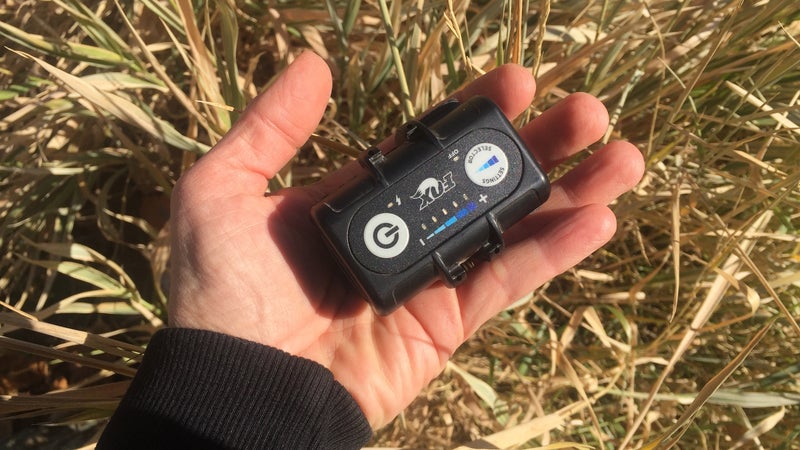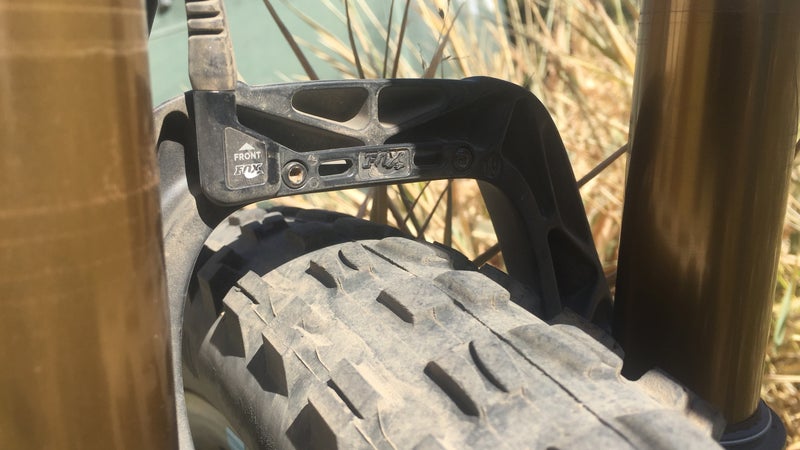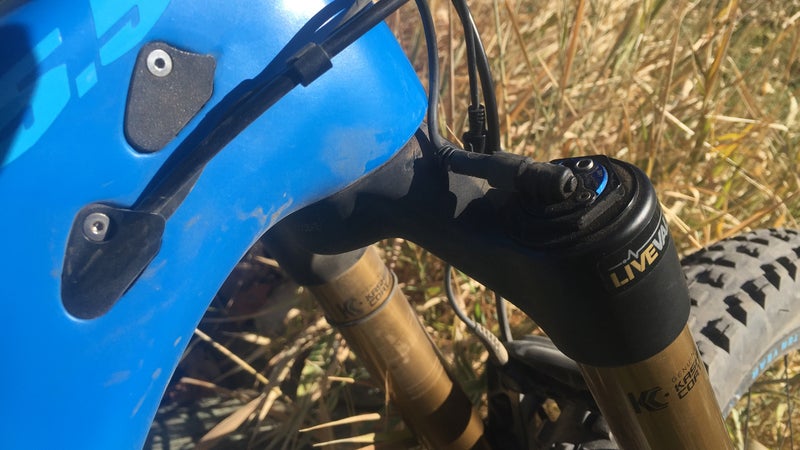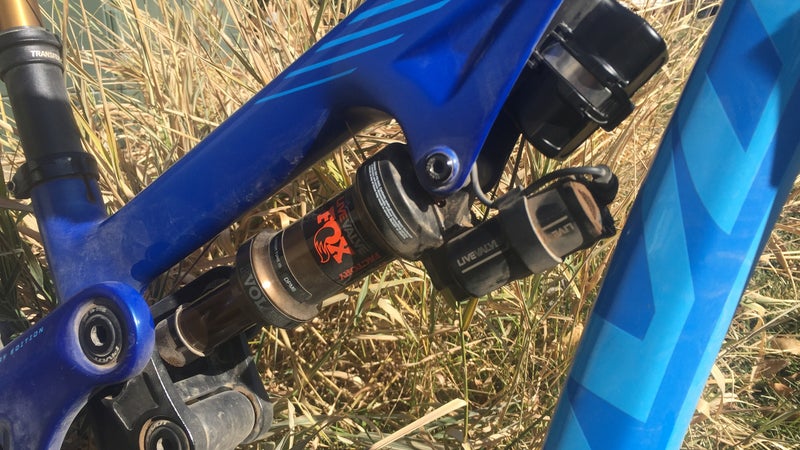The next time you shop for a mountain bike, you’ll need to decide if you want intelligent suspension that senses the terrain every three milliseconds and optimizes performance accordingly. Fox unveiled such magic in 2019 with its Live Valve system, which does what all mountain bikers say they want: it makes the bike feel awesome on every trail—and doesn’t even require the rider to flick a switch. But it’s not cheap.
When purchased as part of a component package on a new bike, the Live Valve costs around $2,000. As an aftermarket upgrade, which is only possible on a handful of existing bike models, the price is more like $3,200. That’s because the system includes a Live Valve–specific fork and shock as well as a small, computerized controller and battery unit that orchestrates split-second alterations to the suspension settings.
I wanted to see if the on-trail payoff was worth that kind of cash, and I was in a unique position to find out. When I bought my Pivot Mach 5.5 Carbon in 2018, the frame included mysterious ports and fittings for some unidentified part. Enlightenment came that August, when Fox unveiled the electronic Live Valve system that would fit there. Pivot was one of the first brands to adopt Live Valve, which also now graces bikes from Giant/Liv, Rocky Mountain, and Scott (with more expected to sign on, though Fox remains mum about just who yet). But because Fox’s system wasn’t quite ready for the public when the Mach 5.5 hit the market, my bike arrived without Live Valve, and I spent a year riding it with a normal Fox 36 fork and Float DPX2 shock.

And I loved it. In fact, I thought my Mach 5.5 Carbon was as good a trail bike as I’d ever ridden. It launched me up climbs that would’ve previously seemed beyond my ability. It also forged a reassuringly straight path through loose rocks, skipped over drops with puppy-style playfulness, and stuck technical lines with pea-splitting precision. The bike wasn’t indulgent—that is to say, it never transformed ledgy descents into cushy, fuzzed-out Valium trips—but in chunky rock gardens, I could aim my tires at dime-size targets and nail them like a sharpshooter.
Then in September, I had Fox replace my standard fork and shock with the battery-operated Live Valve versions (it was a review unit I didn’t pay for). The visual difference isn’t as great as I expected, because the components’ cables are internally routed through the frame: a compact, USB-rechargeable control unit is mounted beneath the bike’s top tube and wired to the shock and fork. (A cable emerging from one of the fork’s top caps is the system’s biggest telltale.) That network gets information about the terrain from two unobtrusive sensors—one built into the arch between the fork’s lowers and another on the frame near the rear axle.
Apparently, wireless technology would’ve been too slow. For now only a hardwired system can analyze the terrain and respond with the appropriate suspension settings in just three milliseconds (that’s 100 times faster than you blink). So before the rider’s sluggish brain can even register a bump, Live Valve has already assessed its g-forces, analyzed the hill, and adapted by opening the fork or shock or both (the system cues fewer and shorter openings for climbing). The controller is also equipped with a free-fall detector, so when you launch off a jump, the suspension opens fully to absorb the landing’s impact.

As with standard suspension components, you still need to set the air pressure, rebound, and high-speed compression settings on the Live Valve fork and shock. Fox did that for me, replicating my former settings so the new suspension would exhibit a similar personality. That limited this test’s variables to just one: whether computer-controlled suspension felt radically better than the tried-and-true setup.
On my first ride, I initially noticed no difference, regardless of the setting I selected (the controller permits a choice of five presets that skew the suspension toward firm or soft). I pedaled on pavement to some similarly hard, packed-clay singletrack, and as I climbed, my bike felt as efficient as it always had. Then I hit a stretch of loose, fist-size rocks peppered with a few fixed boulders—and instead of the slight slippage that I was accustomed to feeling from the rear wheel, it stuck like Velcro and propelled me through the jumble with surprising speed.
That planted sensation became de rigueur. On subsequent rides, I noticed that as I pedaled over nests of roots or across slabs of broken, potholed slickrock, my wheels clung to the ground like never before. My traction improved, and with it, my efficiency. Assuming I had the muscle to move the tire, it was always at the ready, clinging to the mountainside, awaiting only my pedal stroke to float across the lumps. My bike had become an even better climber, and my ego soaked up the flattery.

Descending revealed the most dramatic change in my bike’s personality. In Steamboat Springs, Colorado, while heading down a quarter-mile stretch of ledgy rock nicknamed Little Moab, I felt an unaccustomed smoothness. I’d ridden this backyard trail countless times on my former setup, but with Live Valve, the drop-offs suddenly seemed less jarring and the ride almost plush. I wasn’t trying to beat anyone’s Strava time, but I definitely set my own PR that day. My suspension provided most of the control I needed, and I could ease off my brakes and fly.
Cross-country and enduro racers will certainly benefit from Live Valve, which imposed a weight penalty of about five ounces on my setup but makes up for it with improved efficiency and speed. I’m not a racer, but I loved how it helped me keep up with my faster friends. I also appreciated the way it extended my bike’s do-it-all range. By improving its climbing and descending capabilities, Live Valve made the Mach 5.5 Carbon even more versatile than before. And I didn’t even need to flip a lockout lever on my shock or rotate a dial on my fork (two things I often forget to do anyhow). It’s a set-it-and-forget-it innovation that simply works, without oodles of user input—like the Apple computer of the bike world.
But like Apple technology, you pay more for it. And there are additional downsides: bike techs are just now learning to work on the system, so not every wrench will know how to care for it. Its electronics can’t be repaired, though the battery and front sensor are easily replaced (the controller and rear sensor are trickier and could require a return to Fox for service).

Having to charge the battery adds another potentially unwelcome task to your pre-ride checklist. In 15 minutes, it sips enough juice for a two-hour spin; a full charge powers several rides, even ones spaced days apart (for me, one plug-in kept the bike alive over a full weekend of riding). If the battery does die completely, you can keep riding, but the suspension will stay in open mode. The unit can’t survive a pressure washing, but its waterproof seals handle a garden hose just fine (I even dropped it during a river crossing with no ill effects). But I do worry that one day I’ll lose that rechargeable controller unit somewhere—and replacing it costs $550—so I’ve become obsessive about storing it only on the bike or on the charger. Some riders won’t want to sign up for that kind of part babysitting, and a few won’t draw enough benefit from the system to merit its expense. Cyclists who consistently stick to one type of terrain can optimize their standard suspension components for that particular scenario (lift-served bike parks, for example).
Rather, Live Valve has the greatest appeal for riders who hit a hodgepodge of everything—smooth and lumpy trails, climbs and descents—and who want their bike to excel everywhere. I’m of that camp. And honestly, Live Valve has ruined me for “regular” bikes. I didn’t pay for this one, but I will in the future. Now that I know what an always optimized suspension feels like, it’s hard to go back to old-school stuff. It simply feels skippier and slower. And let’s face it: whether you’re climbing or descending, fast is fun.


